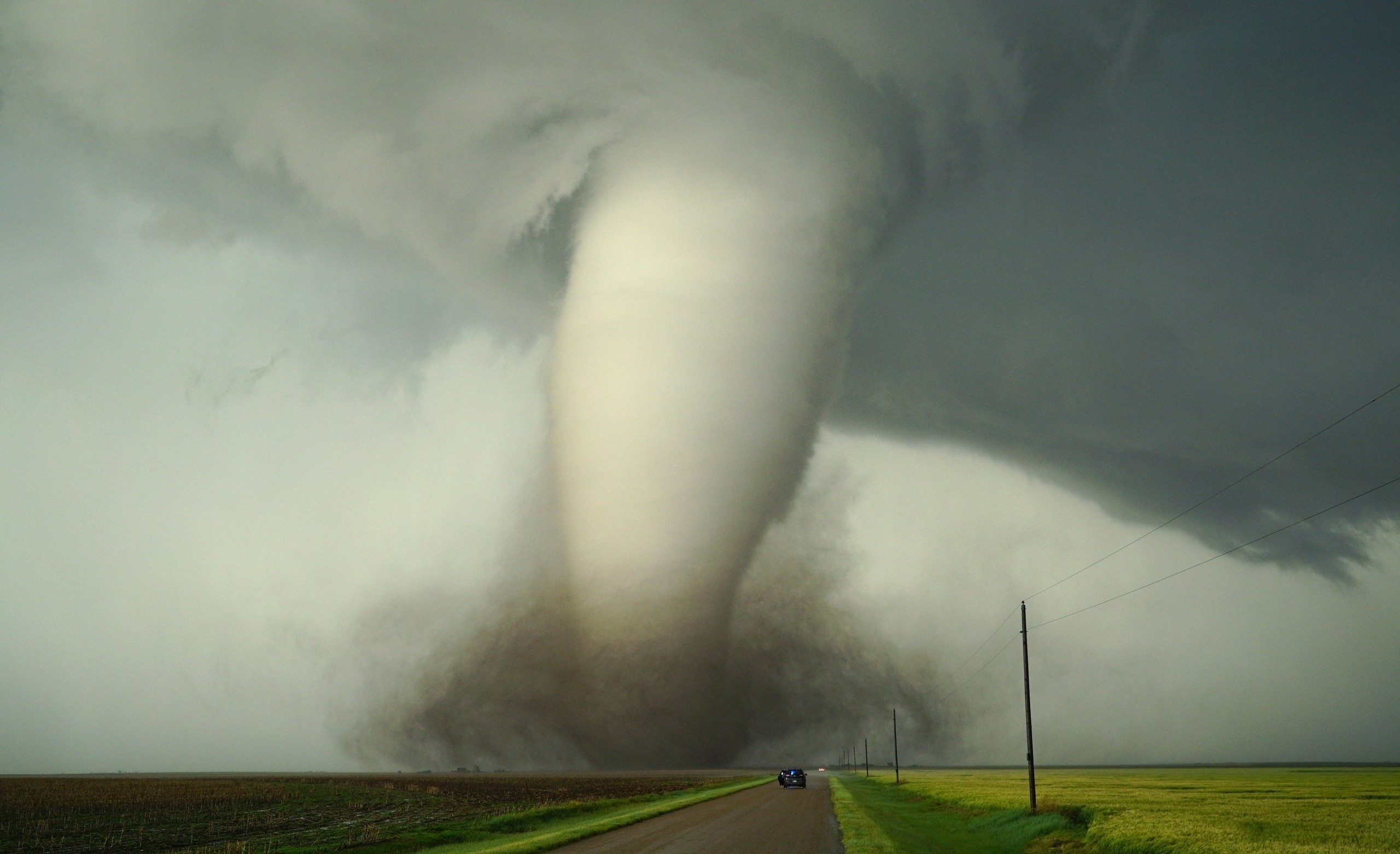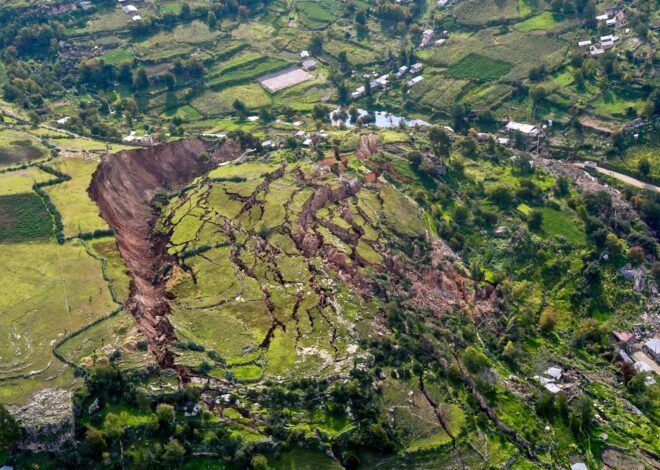
How To Survive In A Tornado
Welcome to the ultimate guide on how to survive in a tornado. When dark clouds gather ominously and the wind begins to howl, nature’s wrath may unleash one of its most fearsome phenomena: tornadoes.
These swirling vortexes of destruction can wreak havoc within moments, leaving a trail of devastation in their wake. But fear not! With the right knowledge and preparation, you can increase your chances of survival in the face of a tornado.
Join us as we delve into essential tips on how to navigate through these formidable natural disasters and emerge unscathed.
Understanding Tornadoes
Tornadoes are violent columns of rotating air that extend from thunderstorms to the ground below. They can vary in size and intensity, with some reaching wind speeds exceeding 300 miles per hour. These swirling funnels of destruction can cause immense damage to anything in their path, tearing apart buildings and uprooting trees with ease.
The formation of tornadoes is often linked to severe weather conditions such as thunderstorms or hurricanes. When warm, moist air clashes with cool, dry air, it creates instability in the atmosphere, leading to the development of these powerful twisters. Tornadoes typically occur during spring and summer months but can strike at any time of year.
Forecasters use advanced technology like Doppler radar to track storm systems and detect potential tornado activity early on. Despite these advancements, tornadoes remain unpredictable forces of nature that require vigilance and readiness from those in their path. Understanding the characteristics and behavior of tornadoes is crucial for staying safe when faced with these formidable natural phenomena.
How to Prepare Before a Tornado Hits
Understanding the importance of being prepared before a tornado strikes is crucial for your safety and well-being. Start by creating a family emergency plan that includes designated meeting spots, contact information, and evacuation routes.
Stock up on essential supplies such as non-perishable food, water, medications, flashlights, batteries, and a first aid kit. Ensure that you have enough provisions to last at least 72 hours.
Stay informed by keeping an eye on weather forecasts and alerts. Invest in a NOAA Weather Radio or download weather apps to receive timely notifications about severe weather conditions in your area.
Secure outdoor items like patio furniture, grills, and trash cans that could become dangerous projectiles during high winds. Trim trees and remove dead branches to minimize potential damage from falling debris.
Designate a safe room in your home – ideally a basement or an interior room without windows – where you can seek shelter during the storm. Practice regular tornado drills with your family so everyone knows what to do when disaster strikes.
Creating an Emergency Kit
One crucial aspect of preparing for a tornado is creating an emergency kit. This kit should contain essential items to help you survive in the event of a disaster. Start by including non-perishable food, such as canned goods and energy bars, along with plenty of water to last at least three days.
Additionally, pack a first aid kit with necessary supplies like bandages, antiseptic wipes, and medications. Don’t forget to include important documents such as identification papers, insurance information, and emergency contact numbers. A flashlight with extra batteries can be invaluable during power outages.
It’s also wise to have a battery-powered or hand-crank radio to stay informed about the situation outside your shelter. Consider adding blankets or sleeping bags for warmth if needed. Include any personal items like hygiene products and comfort items that may provide some relief during stressful times.
By having an organized and well-equipped emergency kit ready ahead of time, you can increase your chances of staying safe and comfortable during a tornado or other emergencies.
Finding Shelter During a Tornado
When a tornado is imminent, finding shelter becomes crucial for survival. Look for the lowest level of your home or building, ideally a basement or storm cellar. If these options aren’t available, seek refuge in an interior room on the ground floor without windows.
Avoid spaces with large roof spans such as auditoriums or gymnasiums as they can collapse easily under tornado-force winds. If you’re caught outside during a tornado and can’t get to a sturdy building, lie flat in a low-lying area like a ditch and cover your head for protection.
In urban areas where buildings are close together, take cover in an inner hallway or stairwell away from windows. Stay tuned to weather updates through a battery-powered radio or smartphone to know when it’s safe to come out of your shelter.
Remember that staying informed and having a plan in place beforehand greatly increases your chances of finding adequate shelter quickly during a tornado.
Necessary Safety Measures After a Tornado
After a tornado has passed through, it’s crucial to prioritize safety. First and foremost, check yourself and others for injuries. Seek medical attention immediately if needed.
Be cautious when re-entering your home or any other building that may have been damaged by the tornado. Watch out for hazards like gas leaks, structural damage, or downed power lines.
Avoid using matches or lighters in case of gas leaks and only use your phone for emergencies to prevent overloading communication channels during rescue operations.
If you smell gas or suspect a leak, leave the area immediately and contact emergency services from a safe location outside the premises.
Document any damage to your property by taking photographs but do not touch any debris that might be contaminated with hazardous materials.
Dealing with the Aftermath of a Tornado
Once the chaos of a tornado has passed, dealing with the aftermath can be overwhelming. The destruction left in its wake can be heart-wrenching, but it’s essential to stay calm and focused on next steps.
First and foremost, ensure your safety before assessing the damage. Watch out for downed power lines, gas leaks, or unstable structures that could pose risks.
Contact emergency services if needed and check on neighbors or community members who may require assistance. Support each other during this challenging time to foster resilience and recovery.
Document the damage by taking photographs or videos for insurance purposes. Make a detailed list of any lost or damaged possessions to facilitate the claims process.
Reach out to local authorities or disaster relief organizations for support and guidance on how to move forward. Remember that you are not alone in this journey towards rebuilding and healing from the tornado’s impact.
Conclusion: Staying Safe in the Face of a Tornado
Staying safe in the face of a tornado is all about being prepared and knowing what to do before, during, and after one hits. Understanding tornadoes, preparing ahead of time by creating an emergency kit, finding proper shelter when a warning is issued, taking necessary safety measures post-tornado, and dealing with the aftermath are crucial steps in surviving such a natural disaster.
By following these guidelines and staying informed through weather alerts and warnings, you can increase your chances of staying safe during a tornado. Remember that your safety should always be the top priority. Stay vigilant, stay prepared, and stay safe in the face of any tornado that may come your way.



